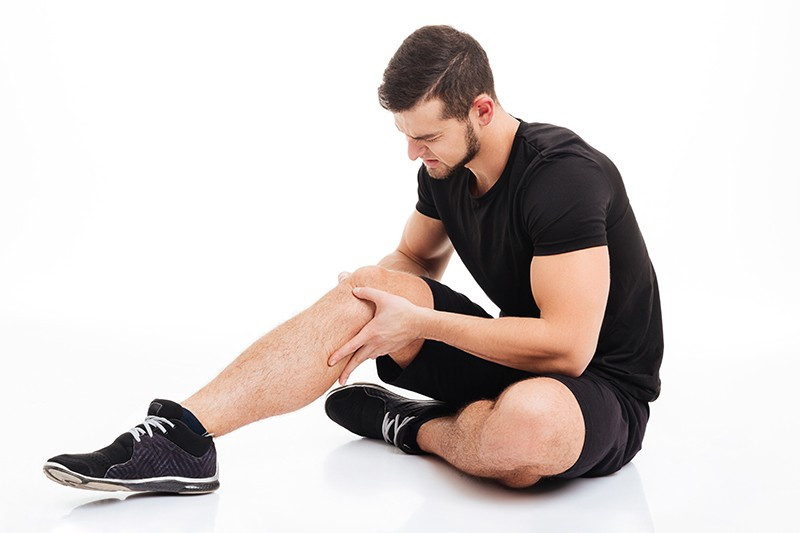Anyone who has suffered from arthritis, let alone something more fleeting such as a bruised elbow, hip or knee, can vouch for how much better life is when free of joint pain. It might last only for a few days or it can be more persistent, even chronic. Joint pain is fairly common, though, affecting millions of men and women all too familiar with how it can impair physical activity while being a 24/7 annoyance. Our joints are very sensitive; many things can cause them pain. Sources of joint pain include diseases like the various forms of arthritis, or a sports injury, recklessly lifting heavily weighted items, a fall or even sudden body movements while doing something as innocent as sitting or standing. Inflammation often accompanies painful joint conditions, such as with rheumatoid arthritis (RA), an autoimmune disease. RA often is accompanied by severe inflammation and most often is found in individuals between the ages of 30 and 60. It also is found in women two or three times more than it is seen in men. RA is the result of the immune system attacking the lining of the membranes (synovium) surrounding the affected joint, per jointhealthmagazine.com. Because of inflammation, synovium thickens and eradicates the cartilage and bone that is part of the joint. The presence of inflammation is one factor that distinguishes RA from osteoarthritis, the most common form of arthritis. The latter is a condition believed to be the result of normal wear and tear of joint tissue in combination with changes related to age that affect the joints. Other common forms of arthritis include gout (affecting the big toe) and fibromyalgia (muscles and soft tissue). Joint pain sufferers are encouraged to see their physician to get a proper diagnosis and a prescribed course of treatment, although significant relief is possible in many instances of joint pain without need for prescription drugs. Natural supplements have proven to be effective in reducing and even eliminating joint pain—among them supplements containing the compounds glucosamine and turmeric/curcumin, with numerous other health benefits. Glucosamine is one of the building blocks of healthy joint cartilage and is believed to have the capacity to prevent additional degradation of joint tissue. Curcumin, often found in combination with turmeric, is a powerful and natural anti-inflammatory. It is known to help the body fight foreign invaders and has a part in repairing damage. Turmeric/curcumin, as a key ingredient of Wonder Labs-manufactured Turmax, is potent enough as an anti-inflammatory to match or even exceed the effectiveness of drugs designed to fight inflammation. Note, too, that The Arthritis Foundation has found turmeric/curcumin to not only have anti-inflammatory properties but also to possess the knack for modifying responses of the immune system.
Dealing with Joint Pain on Our Own
Separate from drugs or supplements, there are measures that we can take ourselves to help alleviate or eliminate joint pain. Here are 10 of them (among many others):- Maintain proper computer posture. Per arthritis.org, you should be at a distance of 20 to 26 inches from your monitor, with the top of your head aligned with the top of the screen with arms hanging comfortably at your side, your wrists relaxed while typing.
- Wear lower high heels. Experts say a three-inch heel puts seven times more stress on your feet than a one-inch heel.
- Alternate sitting and standing. This takes discipline. If your job has you sitting most of the day, take standing breaks for a couple minutes every 30 minutes or so, and vice versa. The idea is to not lock yourself—or your joints—into one position.
- Lose weight. Every pound you lose takes four pounds of stress off your knees.
- Grill fish consistently. The omega-3 fatty acids in fish such as salmon and mackerel can cut down on the pain and inflammation of stiff joints.
- Exercise in the water. Several forms of exercise done in the water, not just swimming, can give you all the benefits of cardiovascular workouts without all the stress on the joints you get on land when running or even walking.
- Cut back on caffeine. Studies have shown that extra caffeine can weaken bones, and that affects joints.
- Stretch. You don't have to combine stretching with a full workout. A few minutes of proper stretching several times a day can help you maintain strong, flexible muscles and ligaments.
- Hit the weights. Better yet, lift them, the type you find in a gym. Weight lifting can produce denser bones and stronger muscles that help stabilize and protect joints.
- Avoid excessive exercise. Too many hours of intense exercise without sufficient time in between for muscles, tendons and ligaments to recuperate can lead to chronic joint pain.

